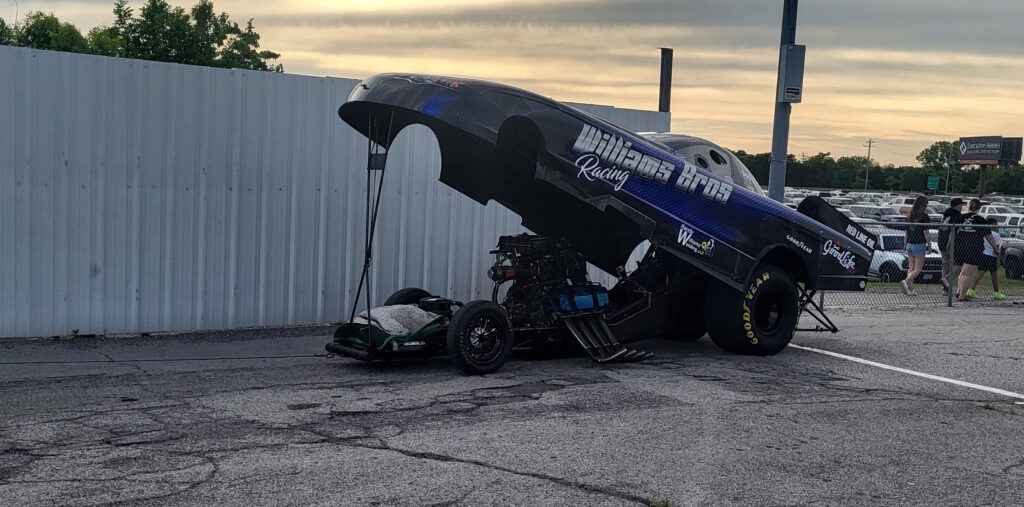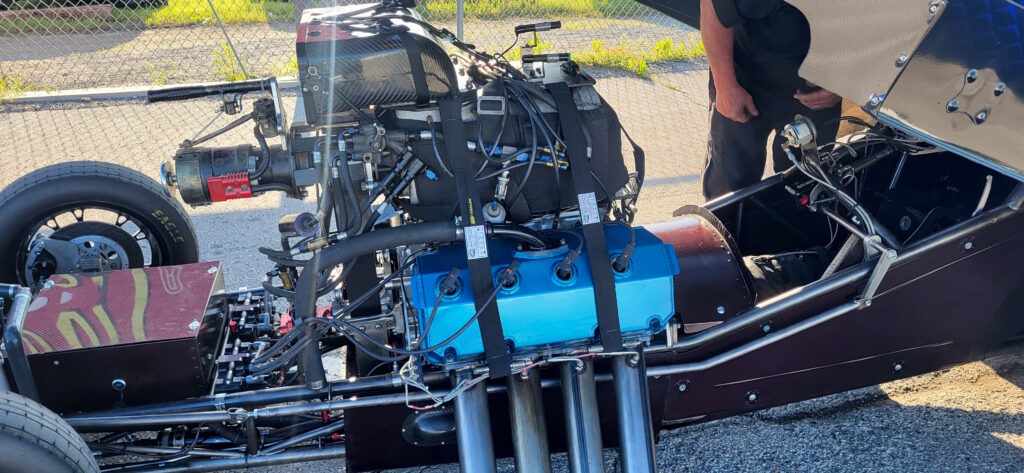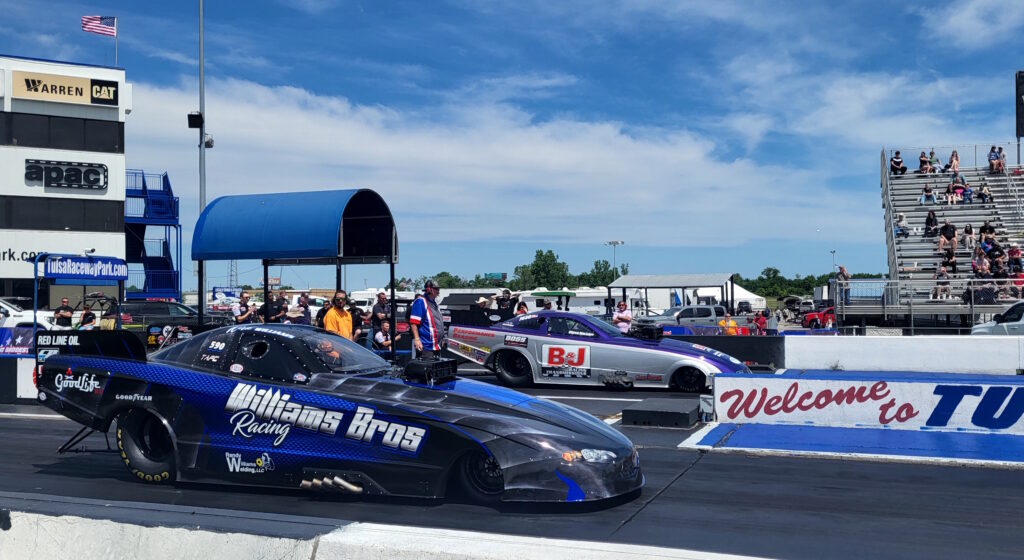The second race on the schedule was the Midwest Drag Racing Series event in Tulsa. This was a quick turnaround for the team, with only four days to return to the shop, service the car, load the trailer, and head back to the track. The team had high hopes for continued performance gains after leaving Dallas, where the car ran a 3.70 at 208 mph. However, the car had other plans.
On the first qualifying run, the car knocked the tires off and spun, shutting down that effort. During the second session, the team made a few adjustments. The car left the line and the wheels were a little fast, but it held. The adjustments were in the right direction. The car ran a 3.73 at 206 mph, ending Day 1 of qualifying in the number 3 spot.
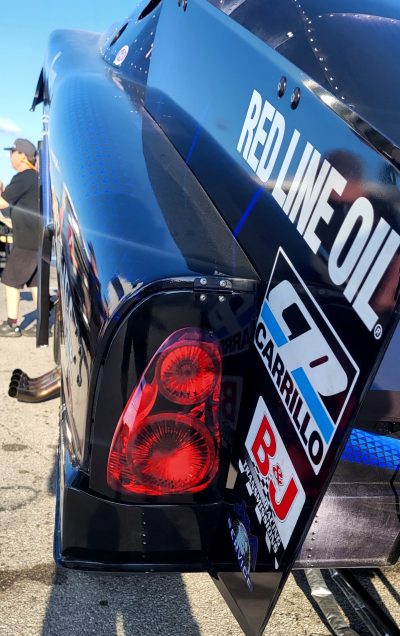
The third and final qualifying pass took place at noon on Saturday. It was partly cloudy, and the track was in relatively good shape. The team made a small clutch adjustment to try and slow the tires down a bit more. But it wasn’t enough, the tires were still too fast, and we knocked them off again. It’s now obvious that last year’s tune-up won’t work well with this new car. It’s behaving much differently than the old one. There’s a good chance the 2-step is causing this change on the starting line. Even though the engine RPM is more tightly controlled, the blades on the injector hat are wide open, providing higher boost at the same RPM. This will require us to treat the starting line differently.
Qualifying closed with us in the number 4 position, where we would face Mark Billington in the first round of eliminations. To win this round, the car needed to go from A to B—ideally close to the Q2 number. Mark qualified with a 3.76 and is capable of running faster. A few more adjustments were made, and this time we were confident the car would get down the track, though unsure how fast.
Both cars lined up and left. Kirk had the advantage on the starting line and took an early lead. The car made it past the 60-foot mark and motored down the track, running a 3.76 at 205 mph. Mark’s car had issues just before the 60-foot mark, causing him to abort the run. Williams advanced past the first round.
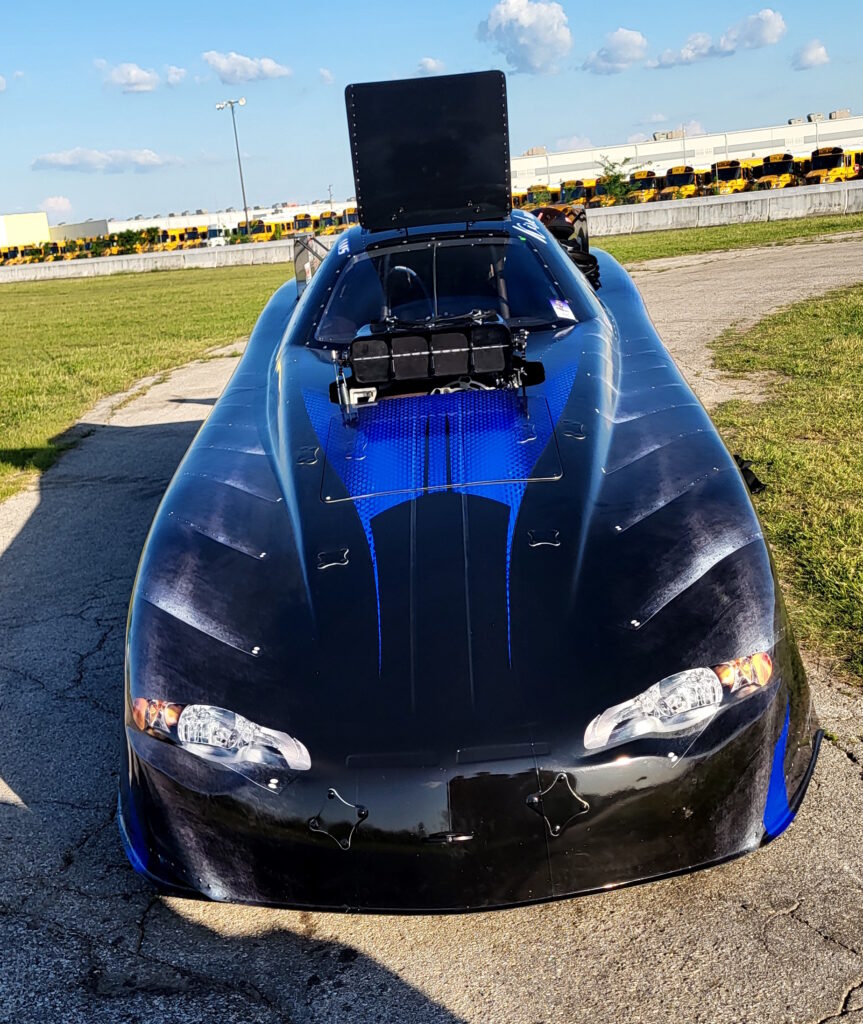
In the second round of eliminations, we faced Jim Whiteley, who had been strong all weekend. We knew we needed to get down the track and pick up the pace to get past him. The sun was no longer directly on the track, and it was cooler. The track felt good, so we believed the Q2 tune-up would hold. We put that setup back in the car and made a small power adjustment to slow the tires slightly and hopefully improve the 60-foot time.
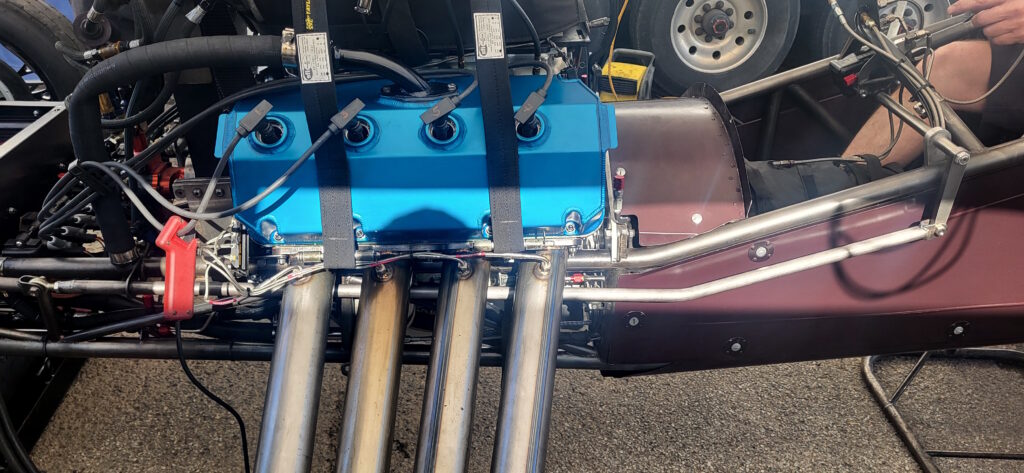
Well, the car—and Jim—had different plans. Jim left first and ran a very strong 3.62, and our car lost traction, knocked the tires off, and went into some shake.
This wasn’t the performance we hoped for after closing strong at the Texas Motorplex the week before. We thought we had a baseline figured out for this new car and setup, but it’s clear there’s still work to do. Who knew it would take more than a handful of passes to figure out a new car, new ignition, and new method for staging and launching?
Good news: each run gives us more data, and we have a GAME PLAN for Eddyville! (We’re sure it’s a good plan.)
